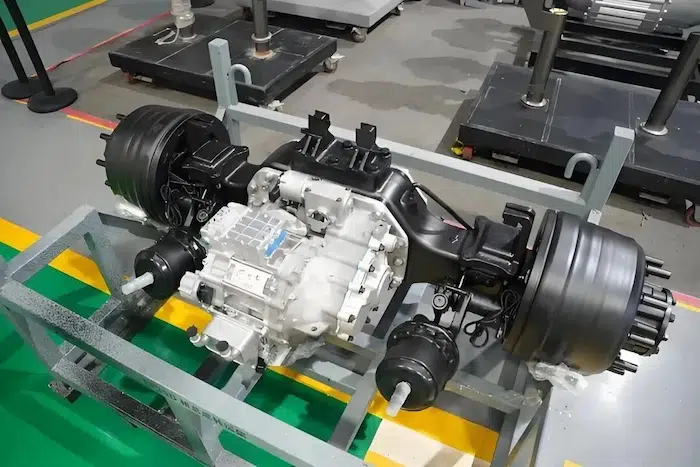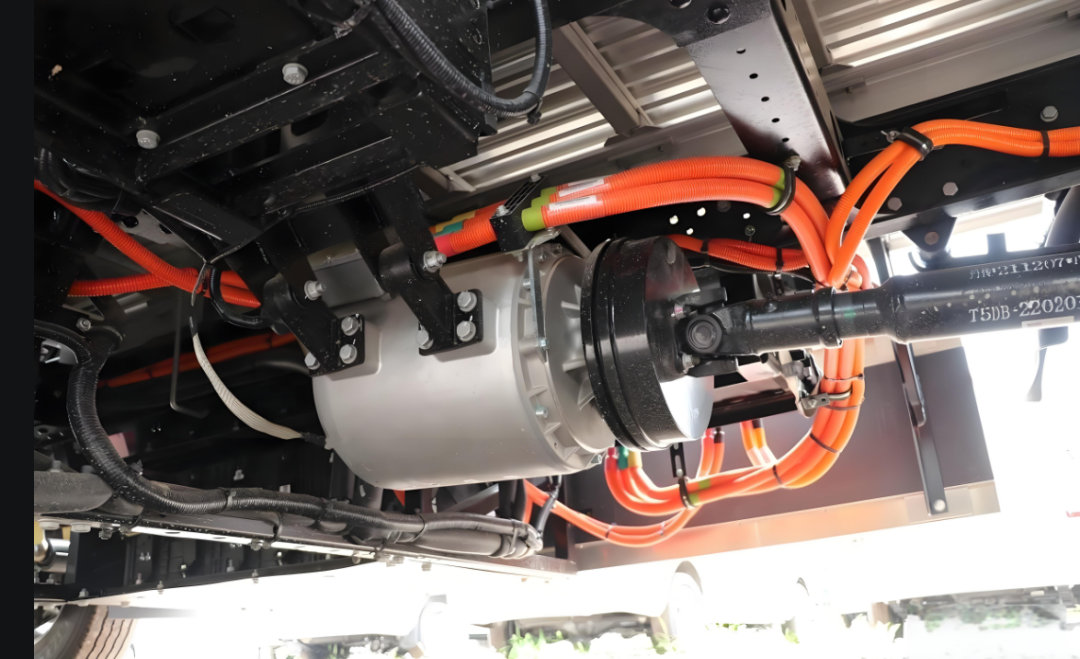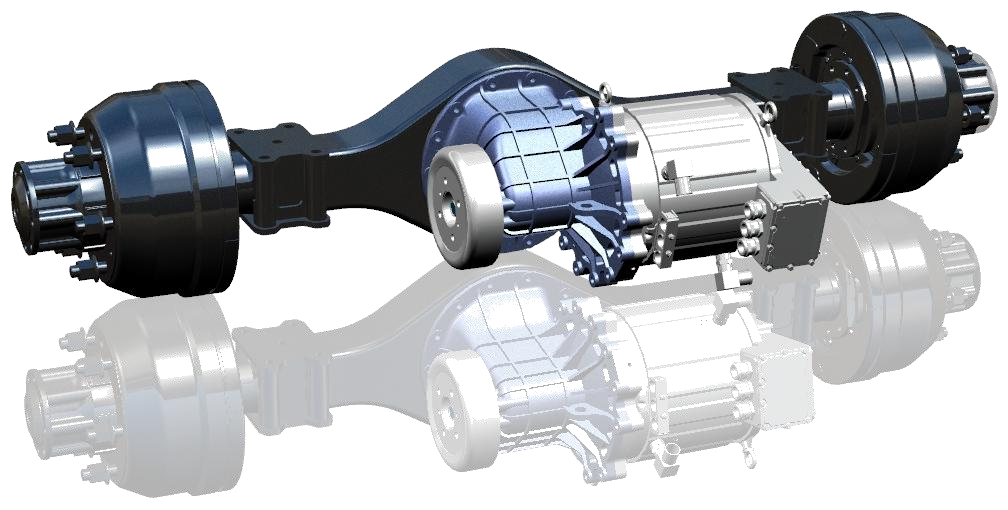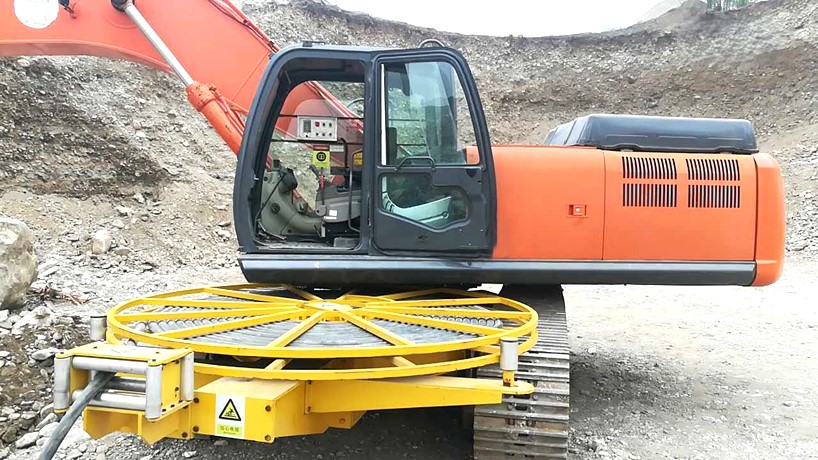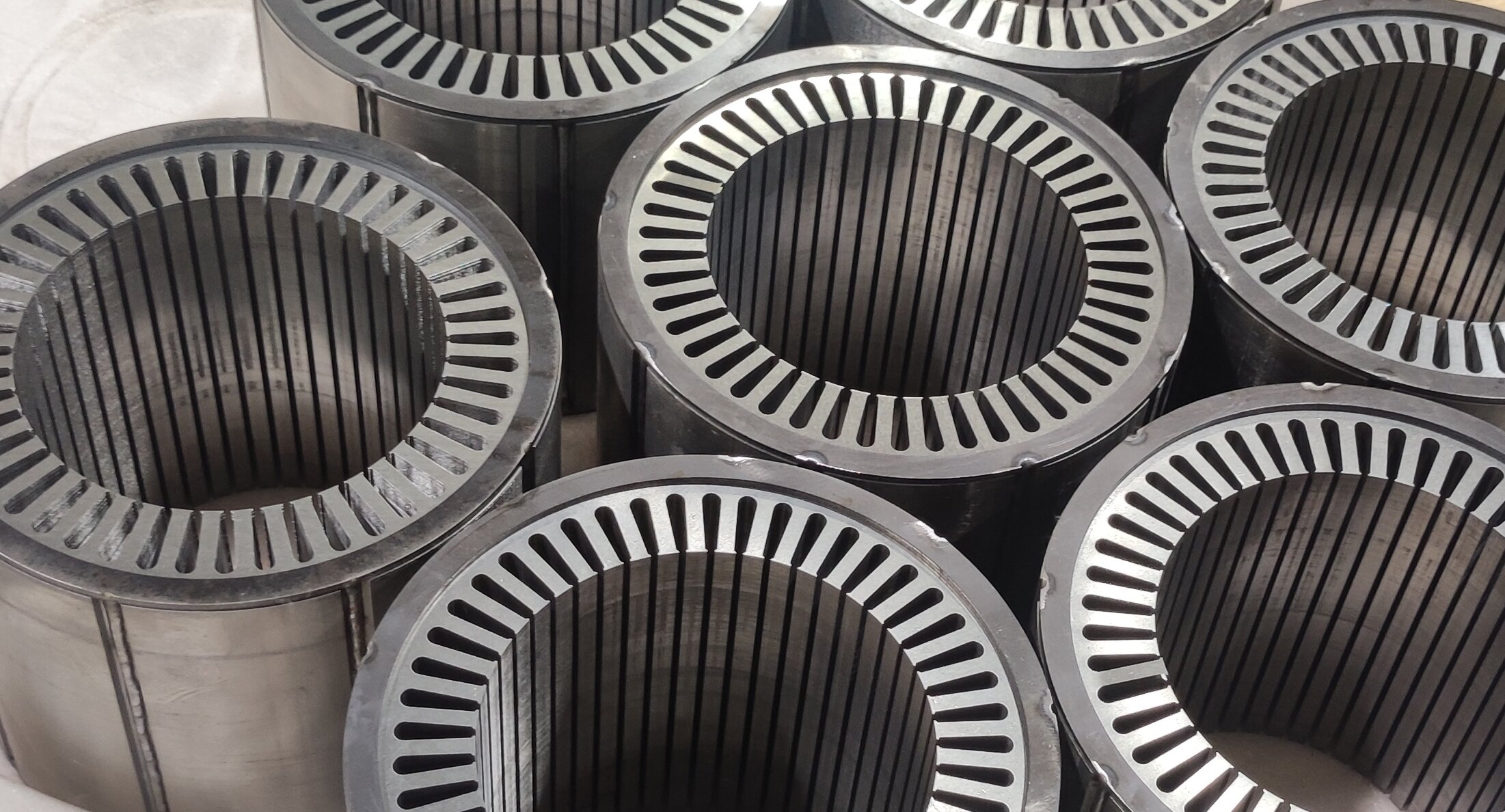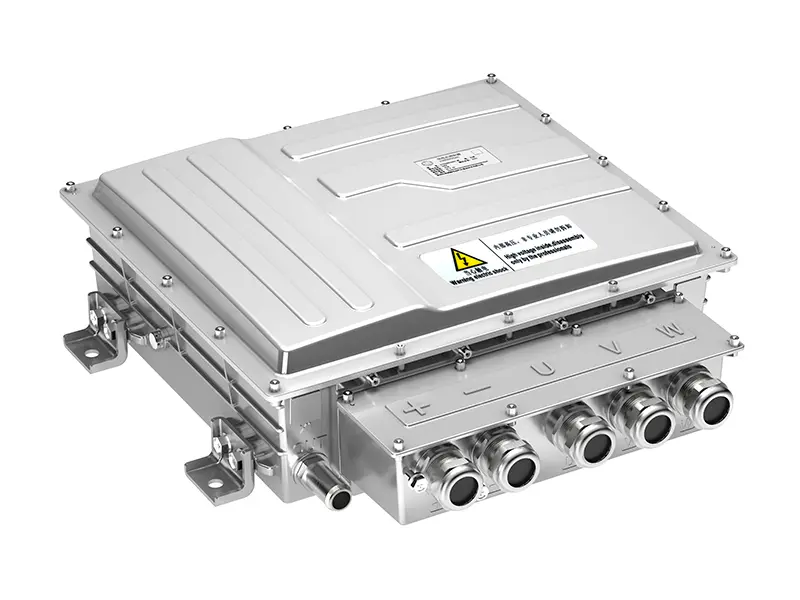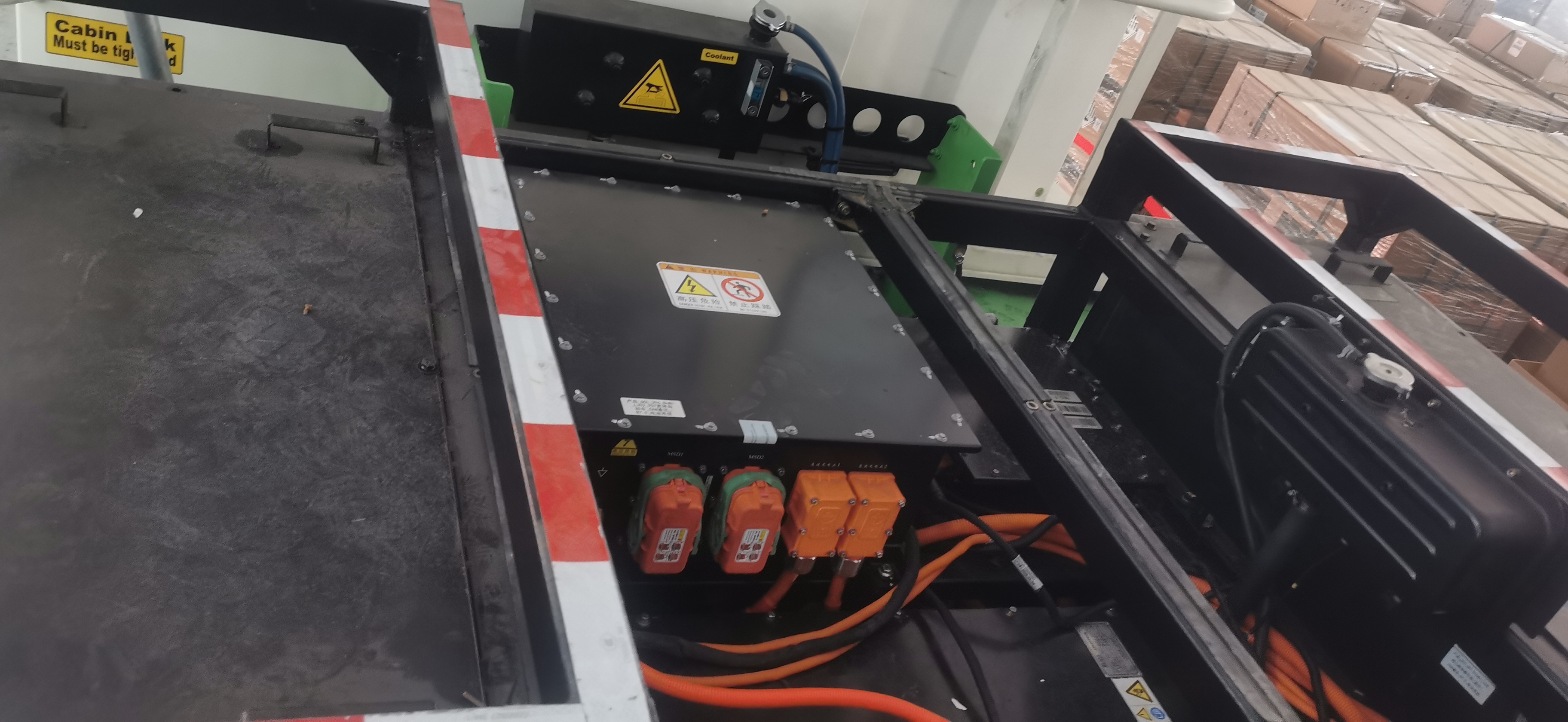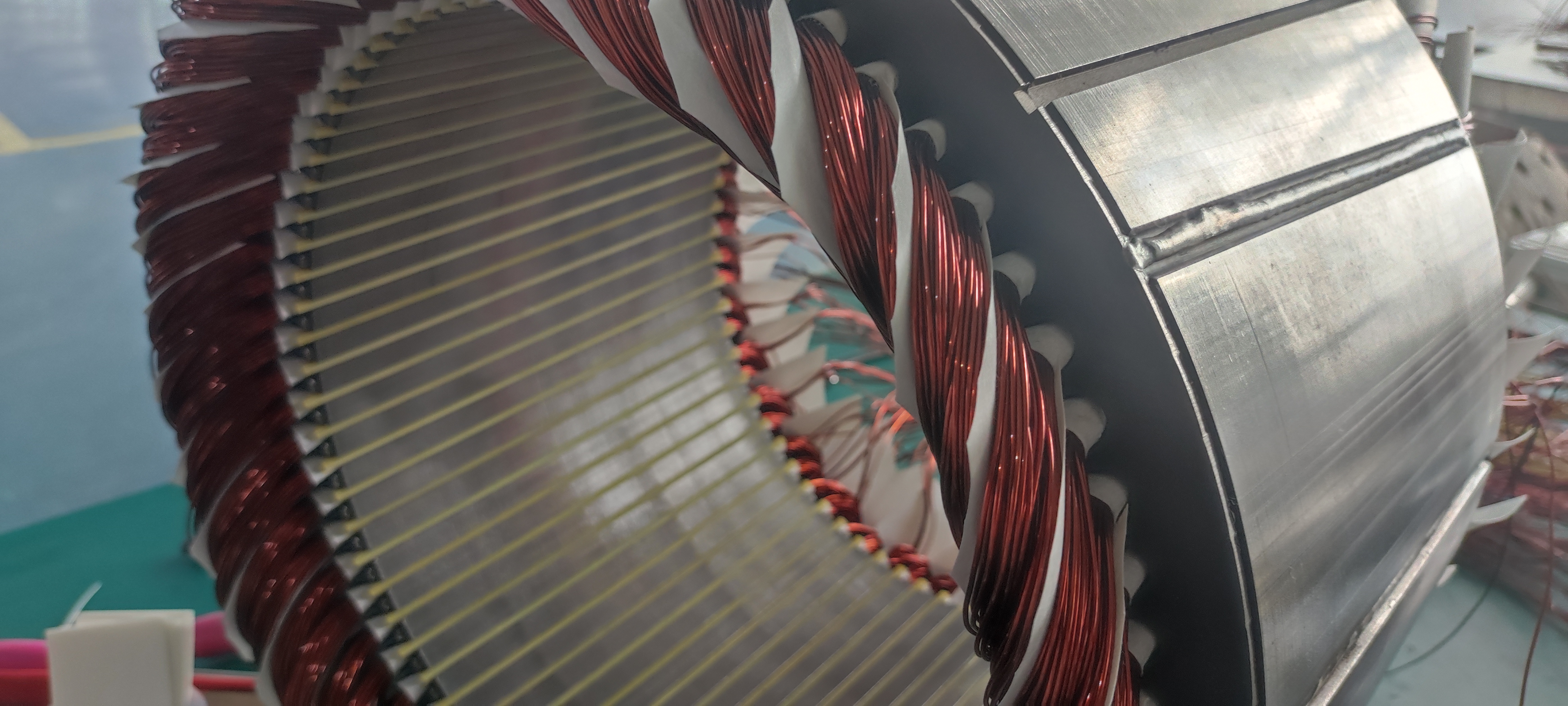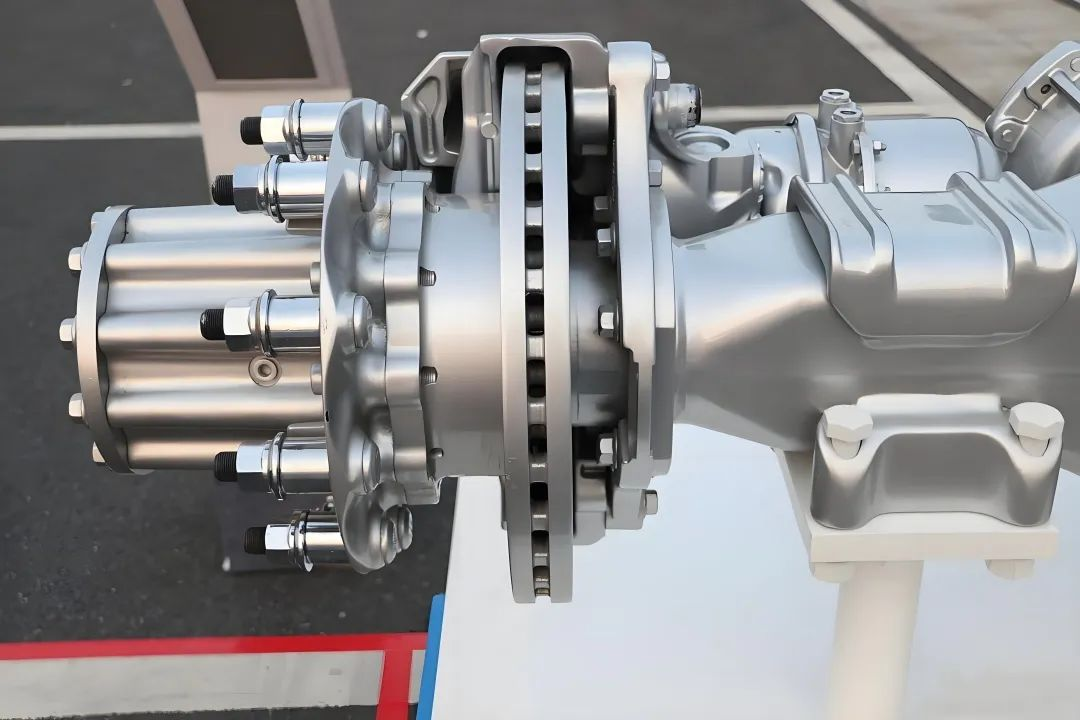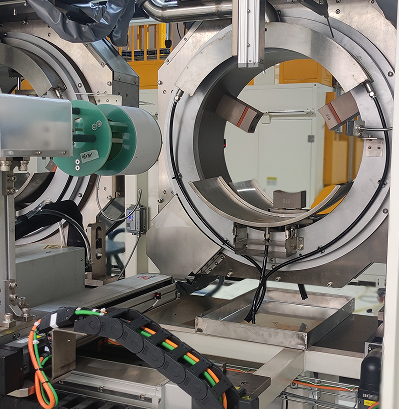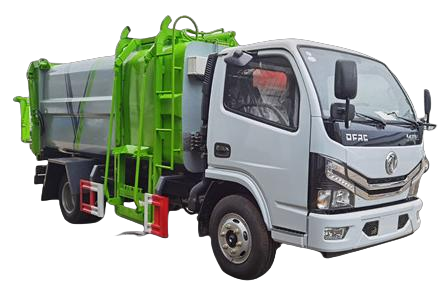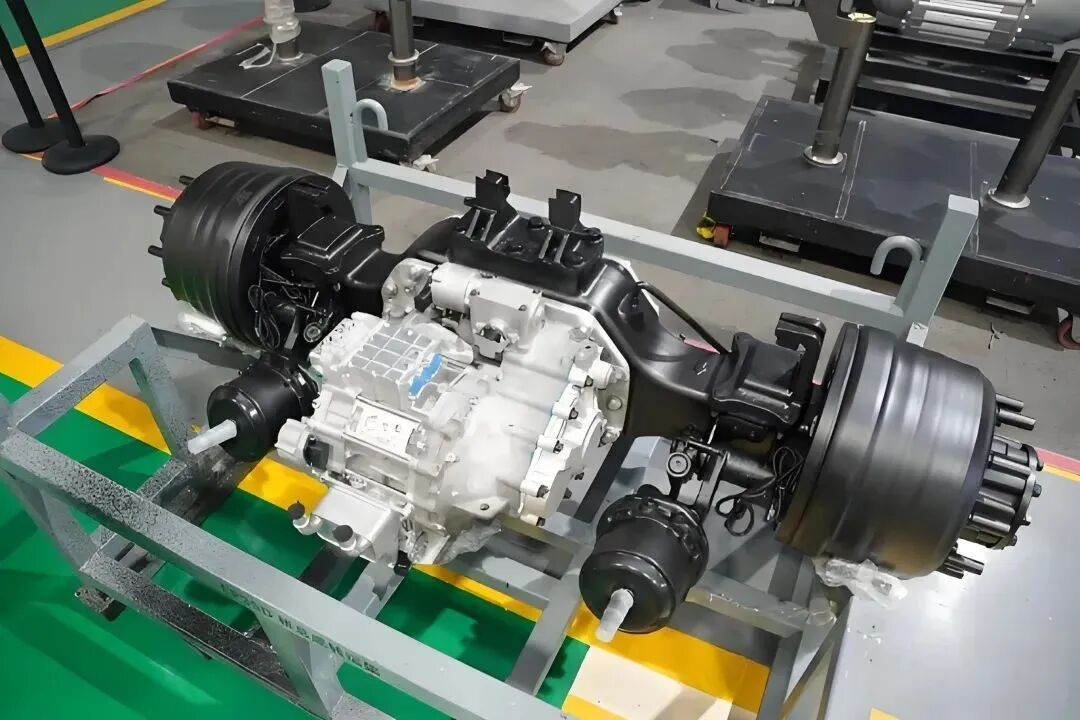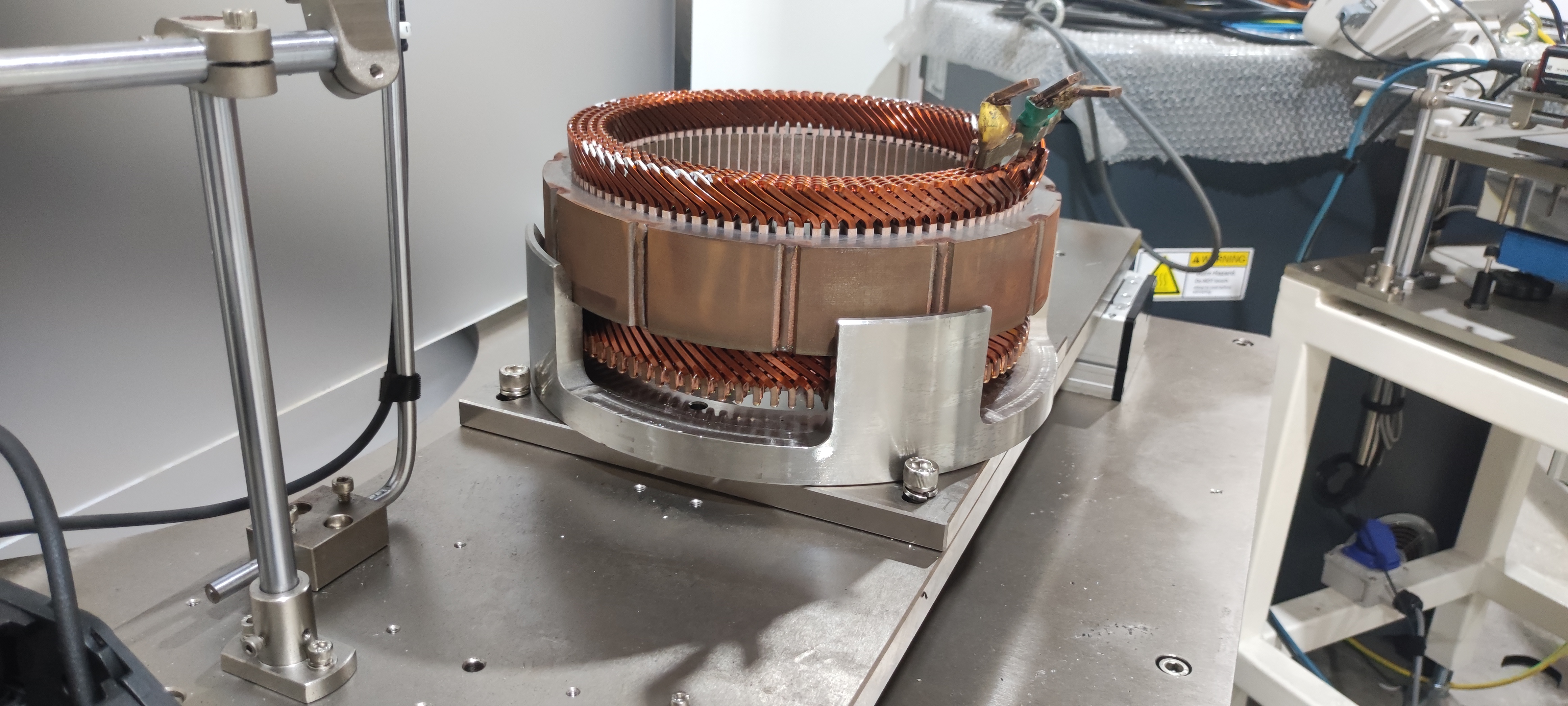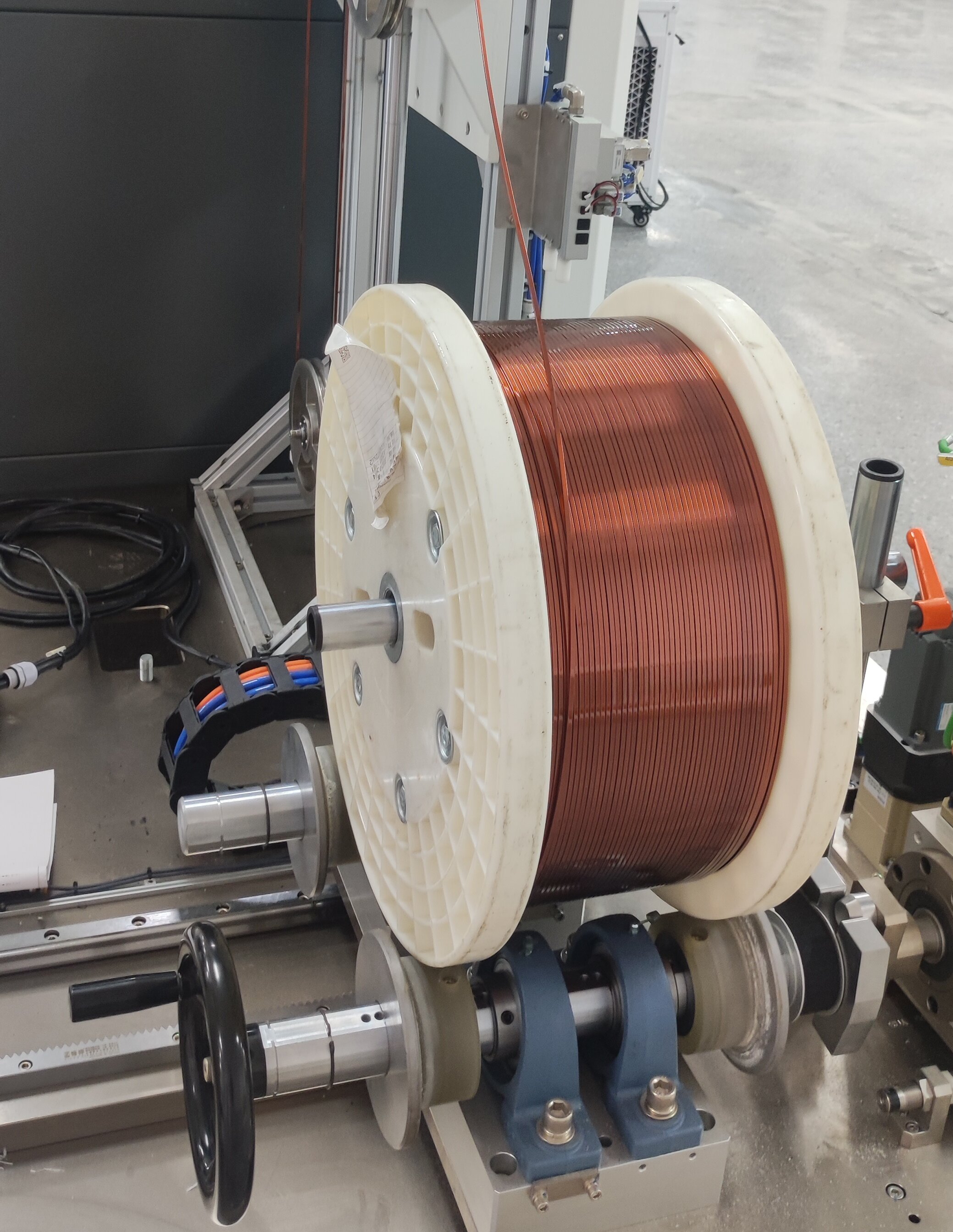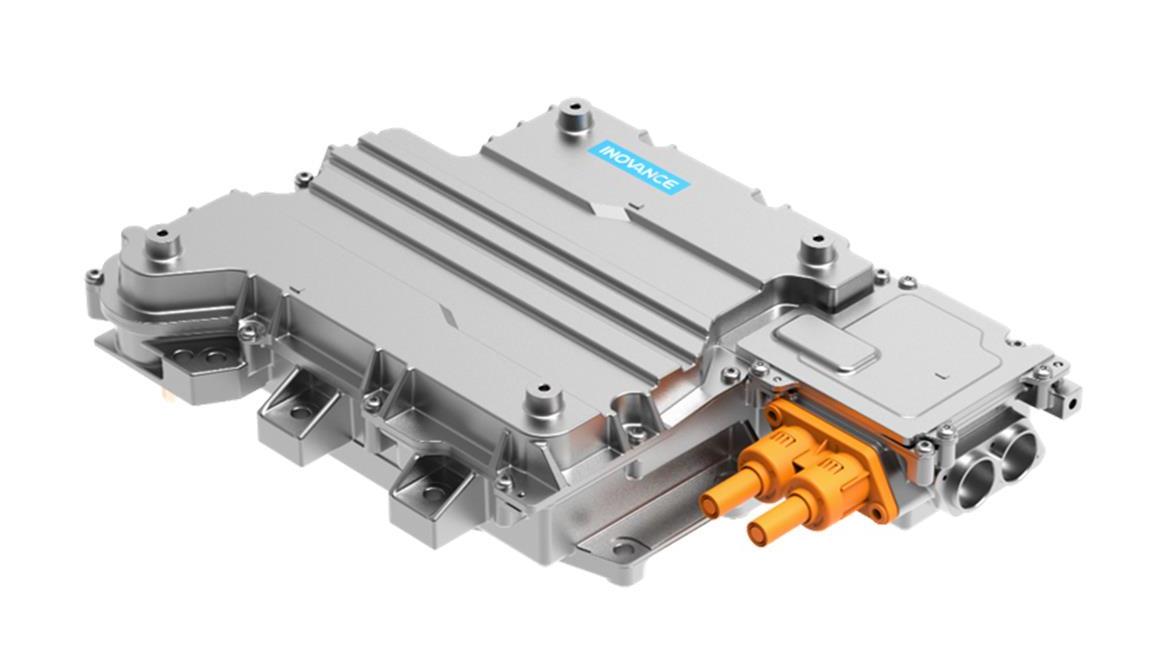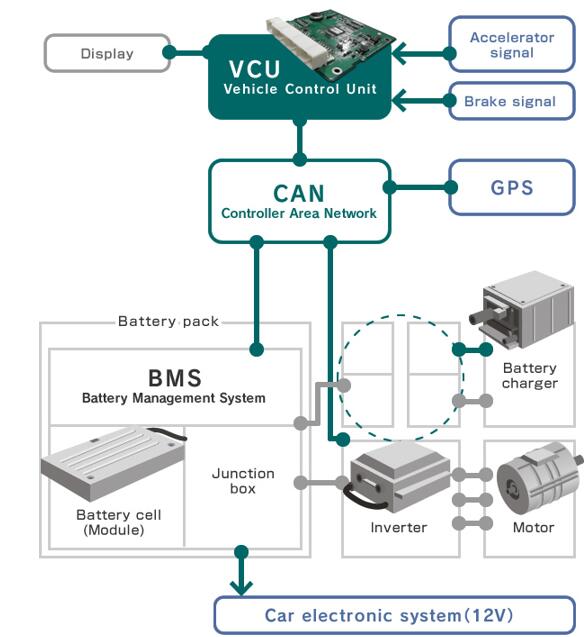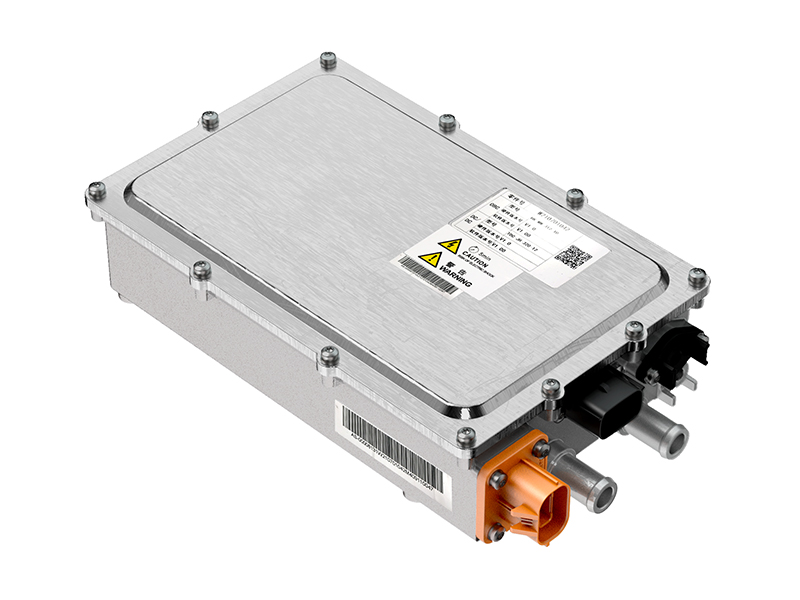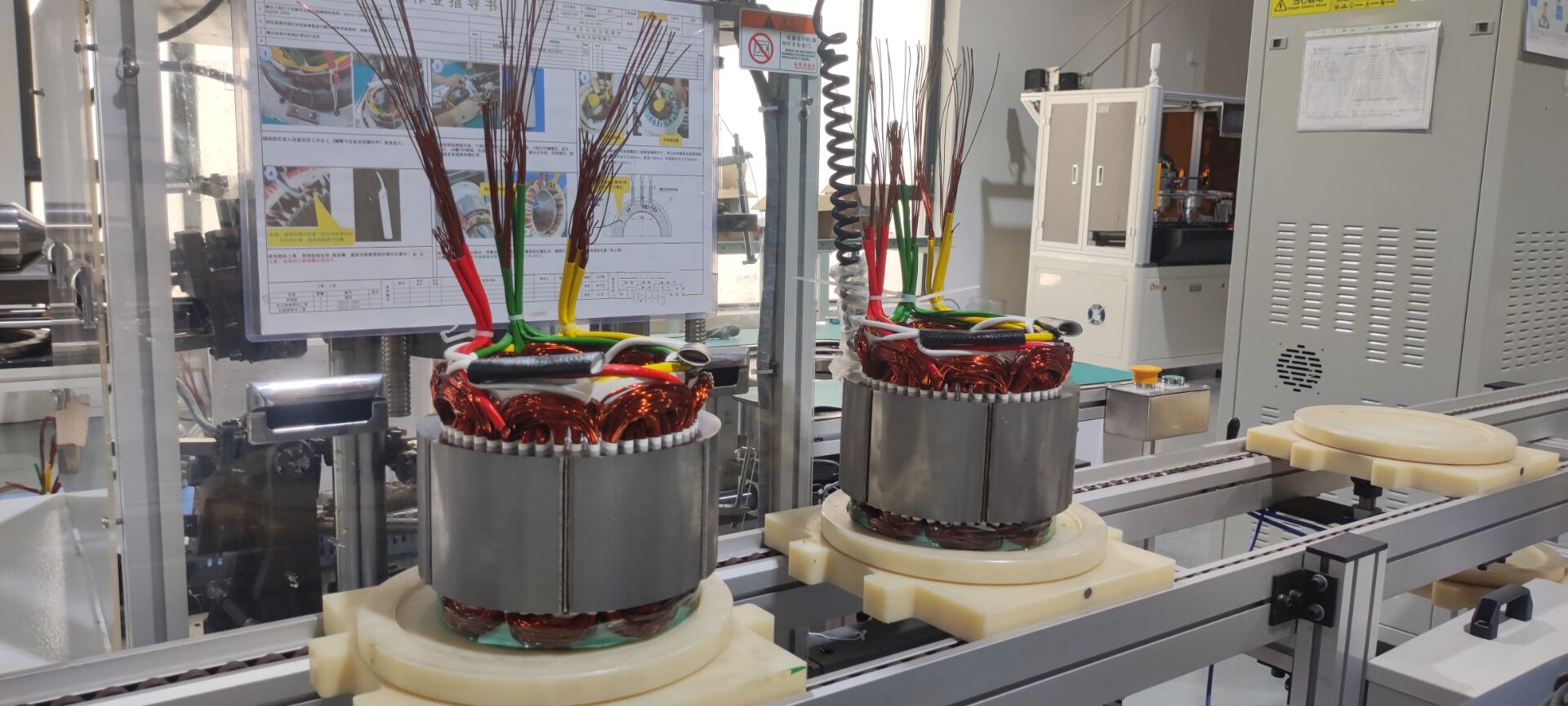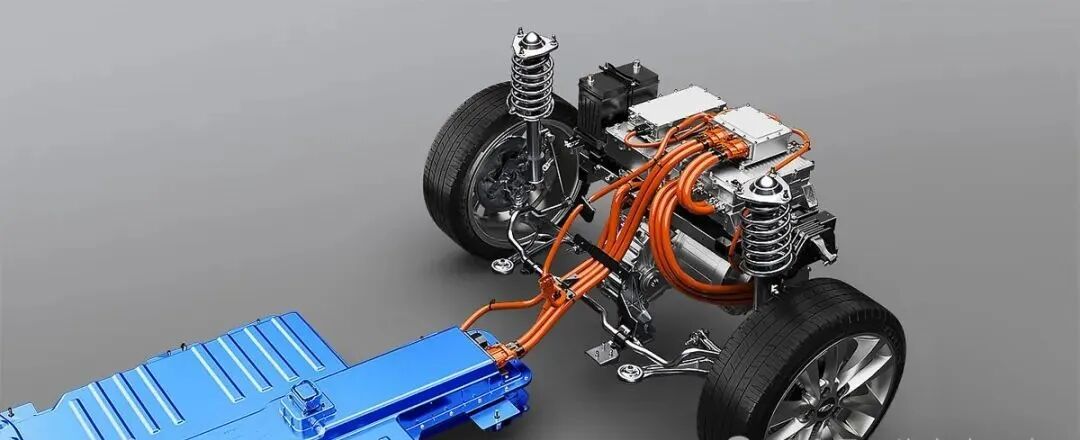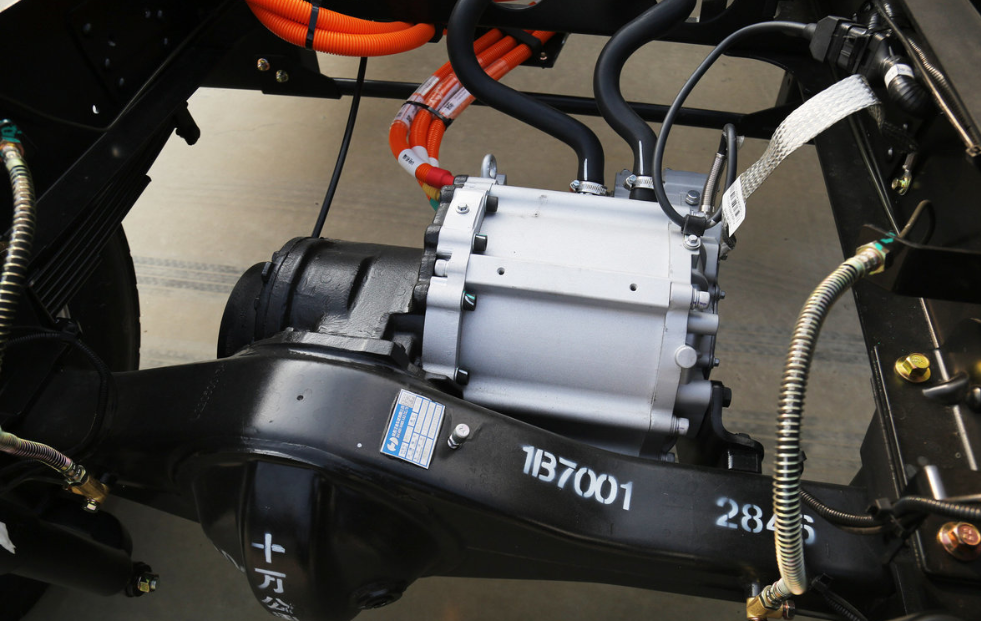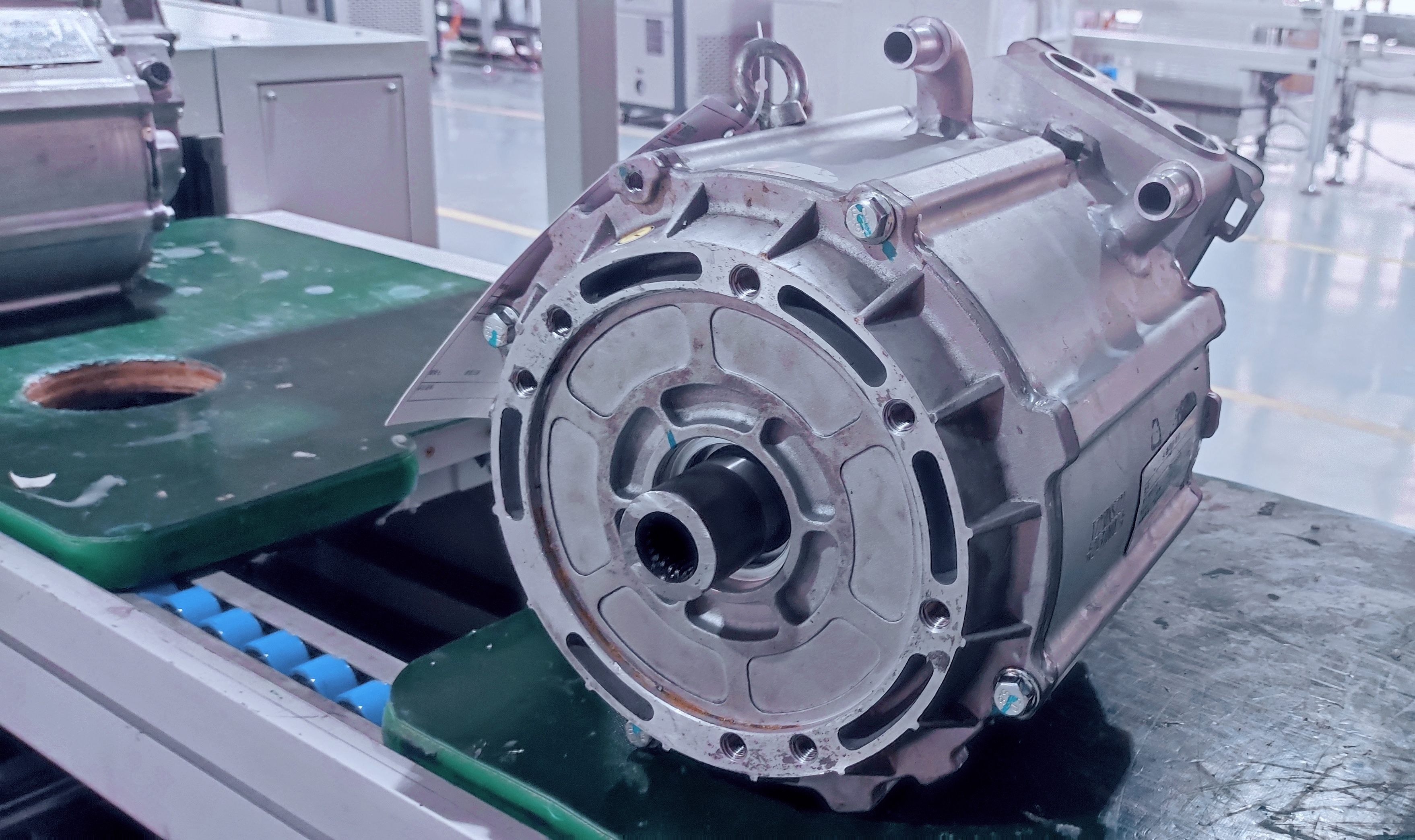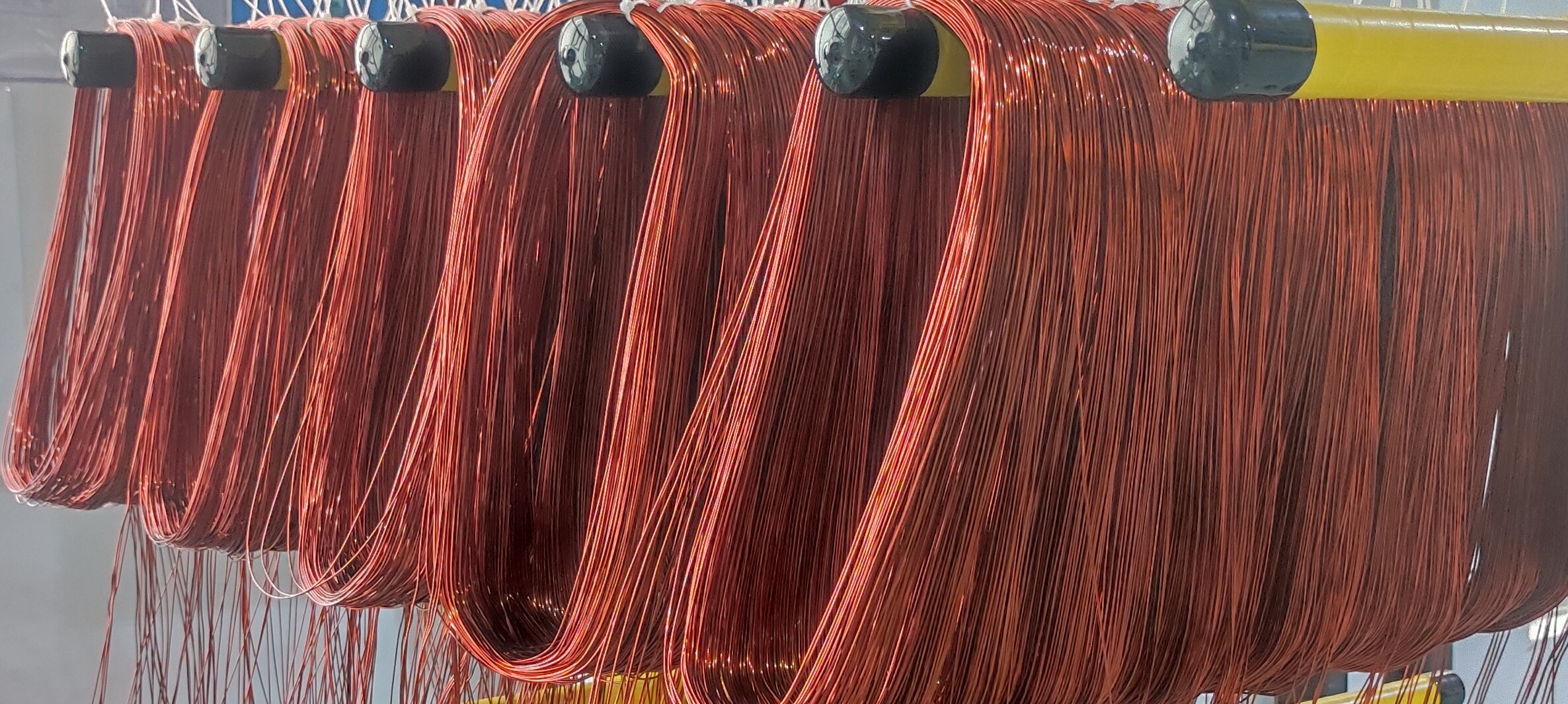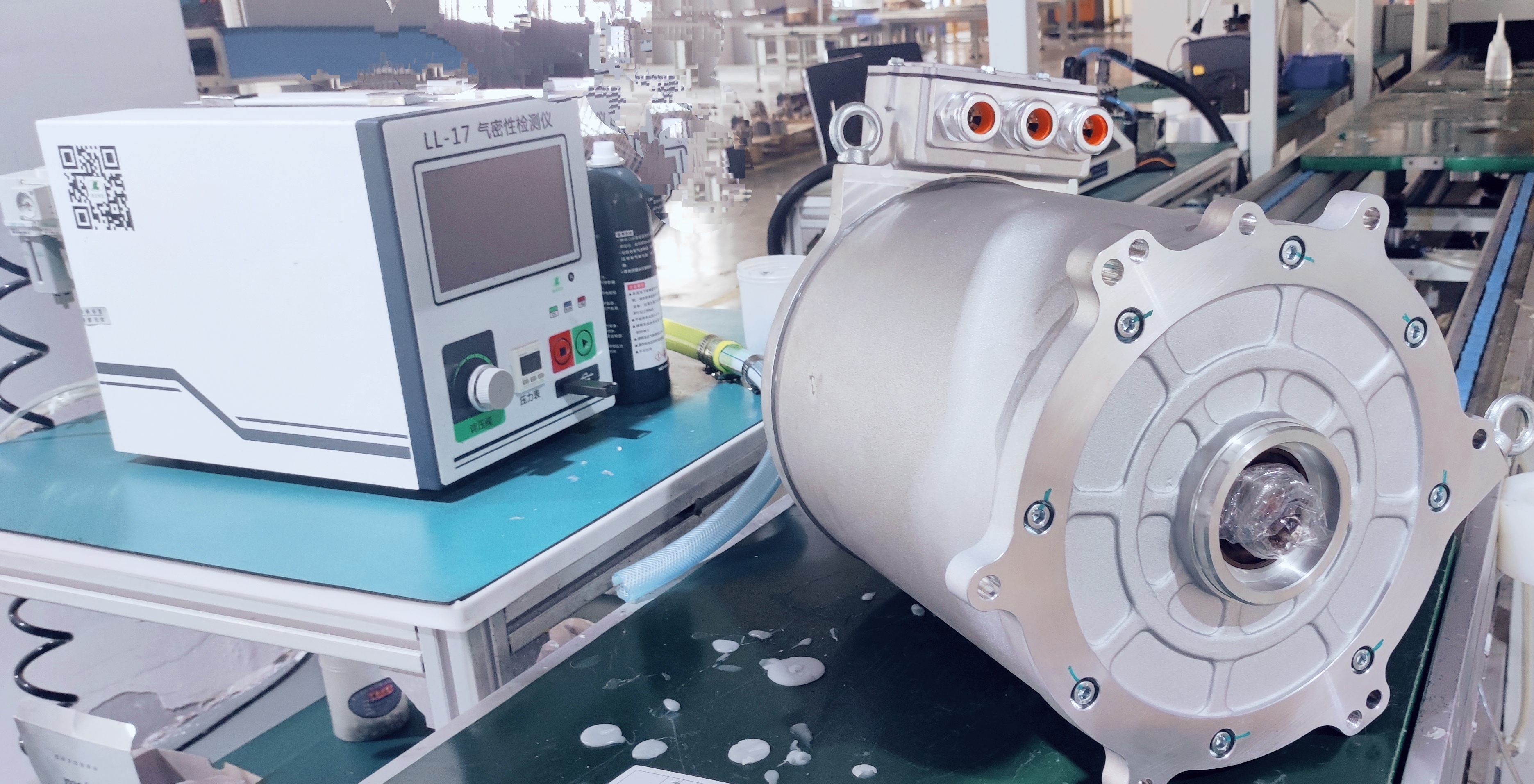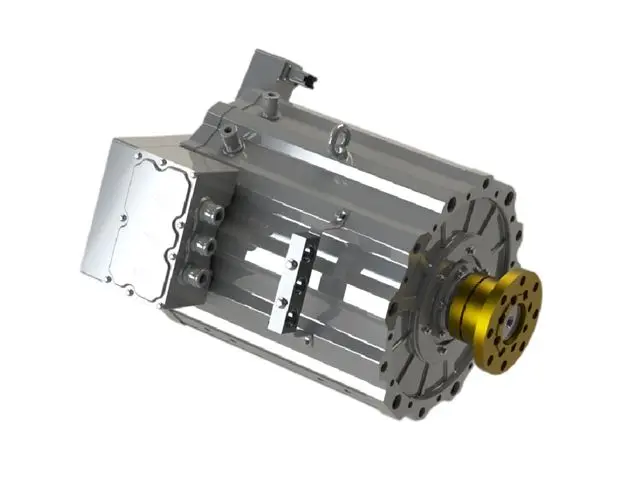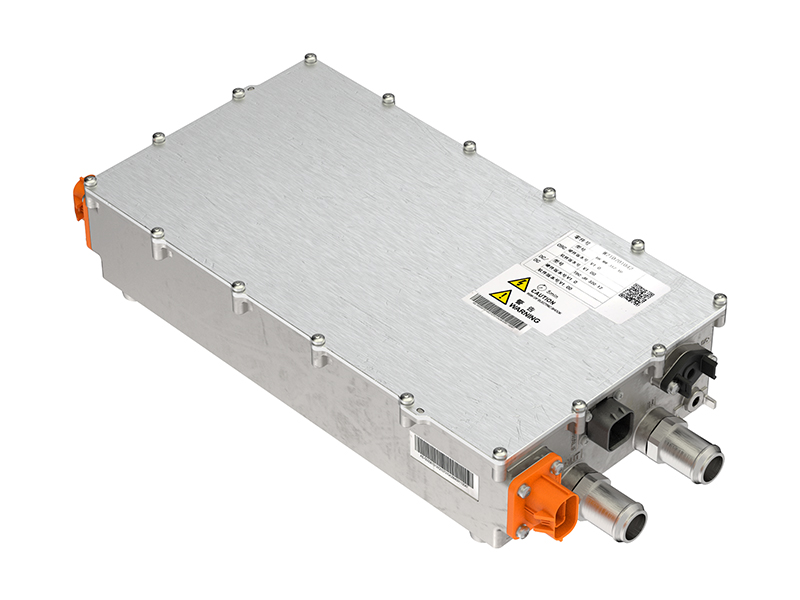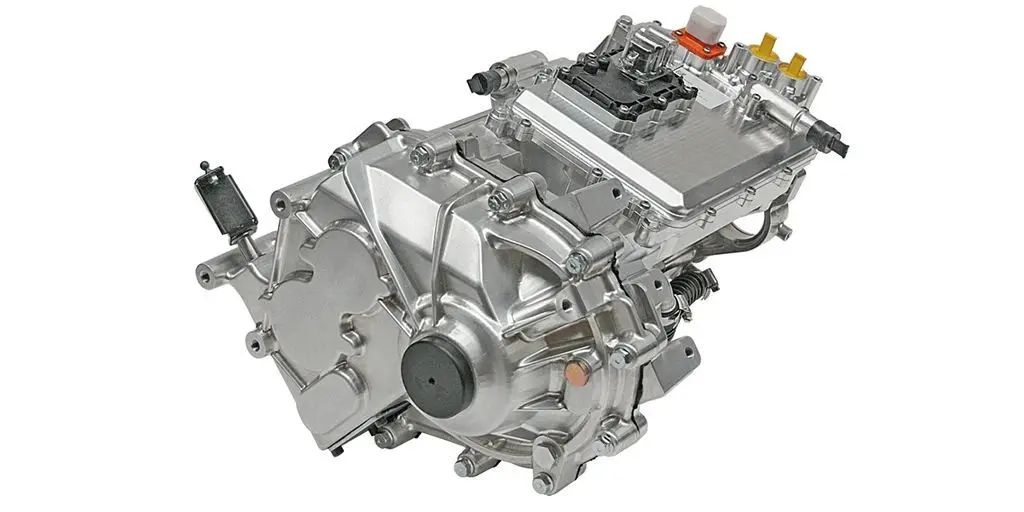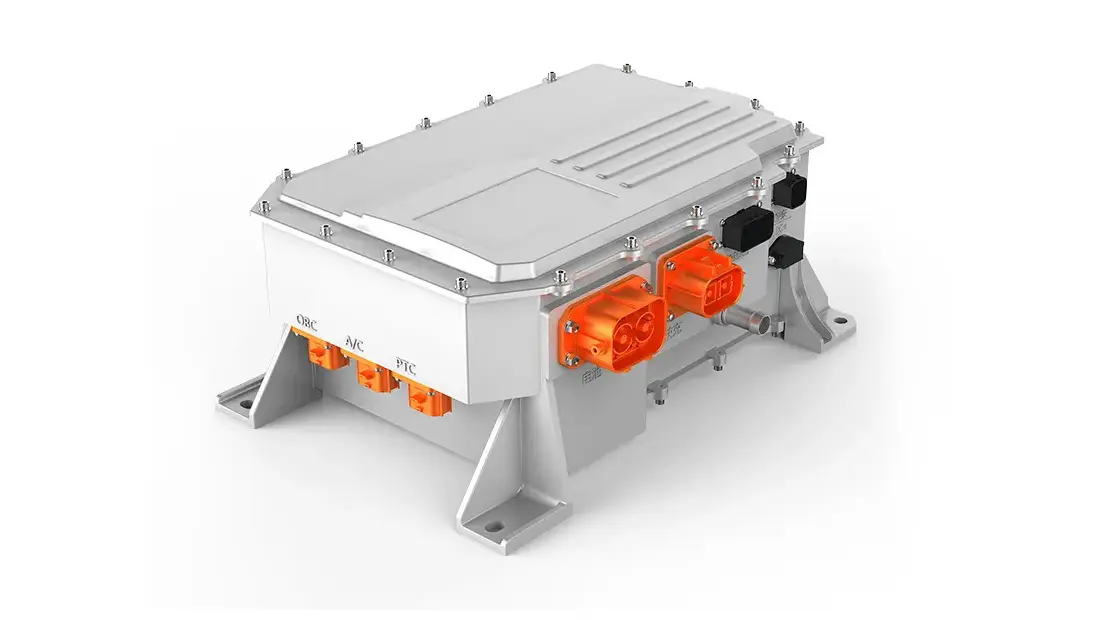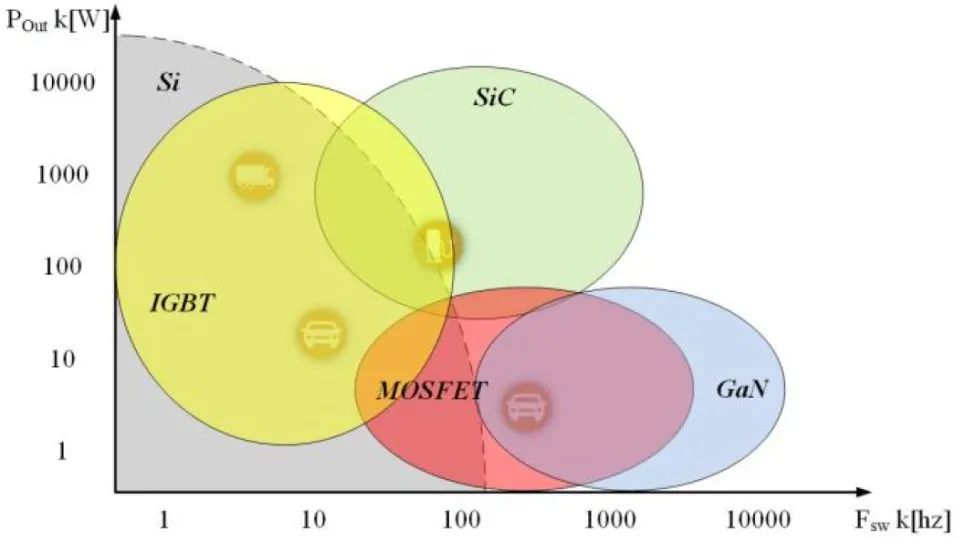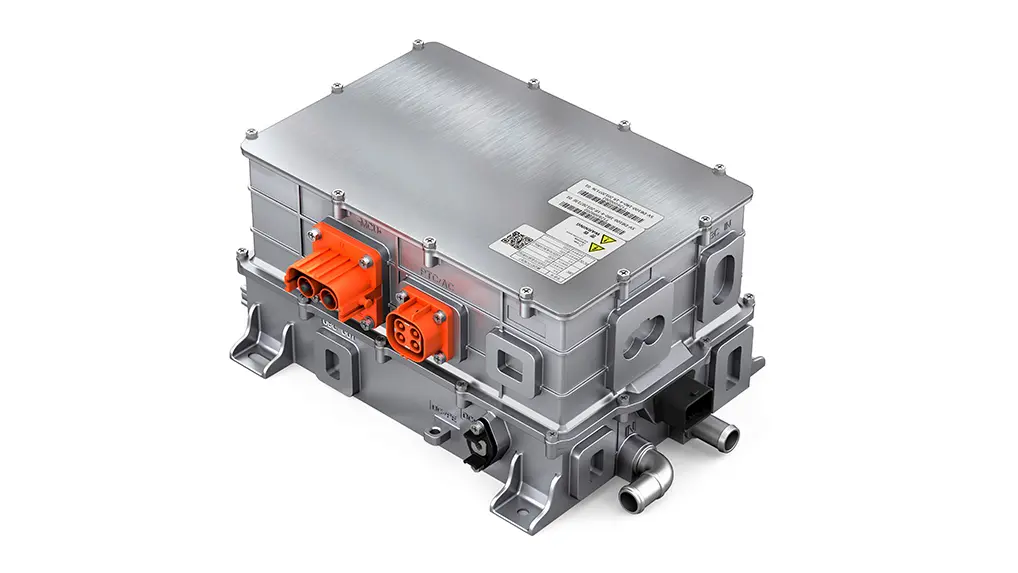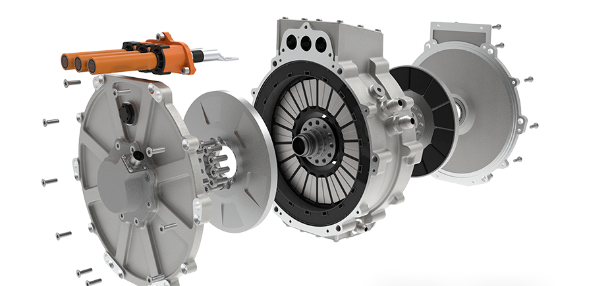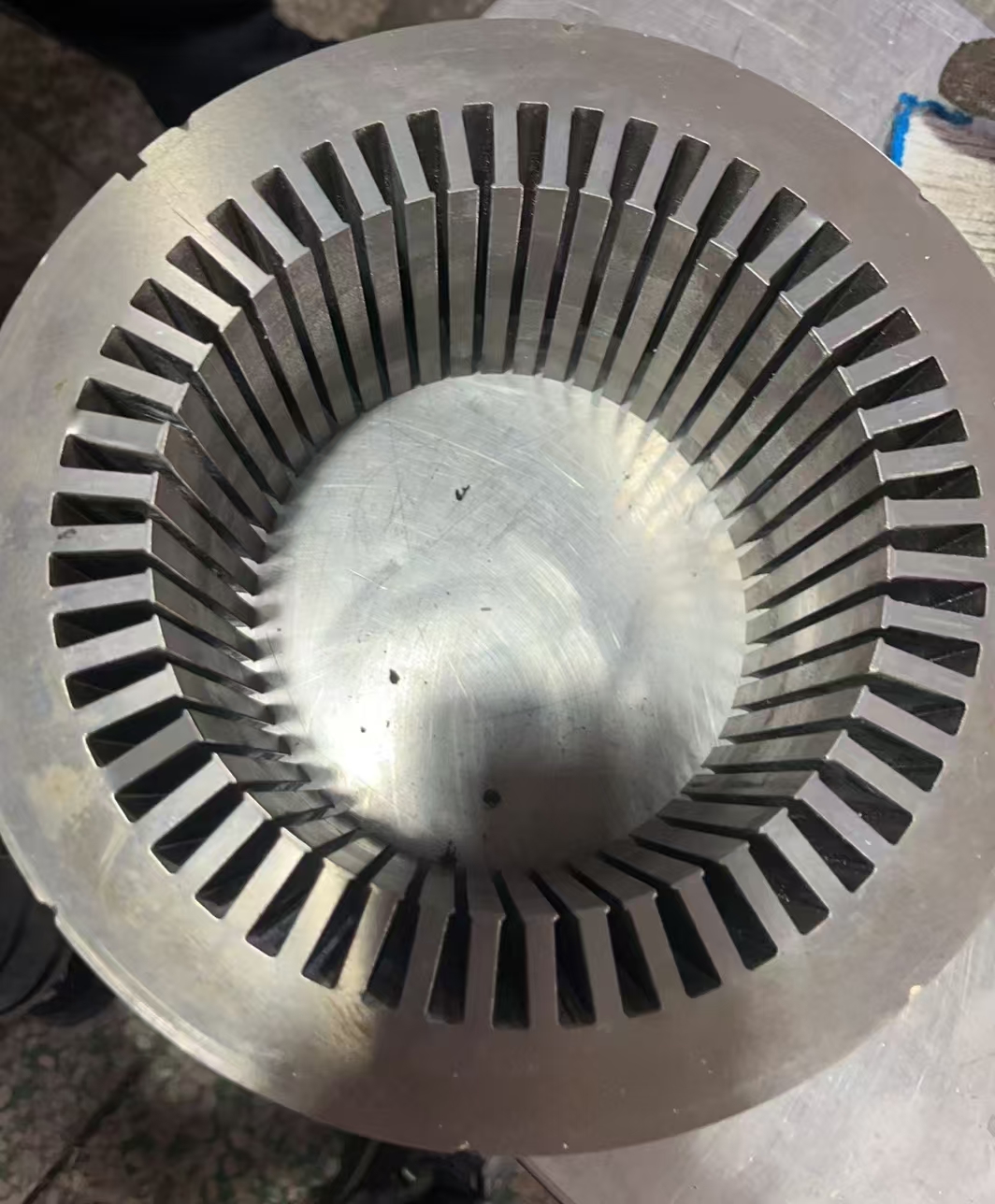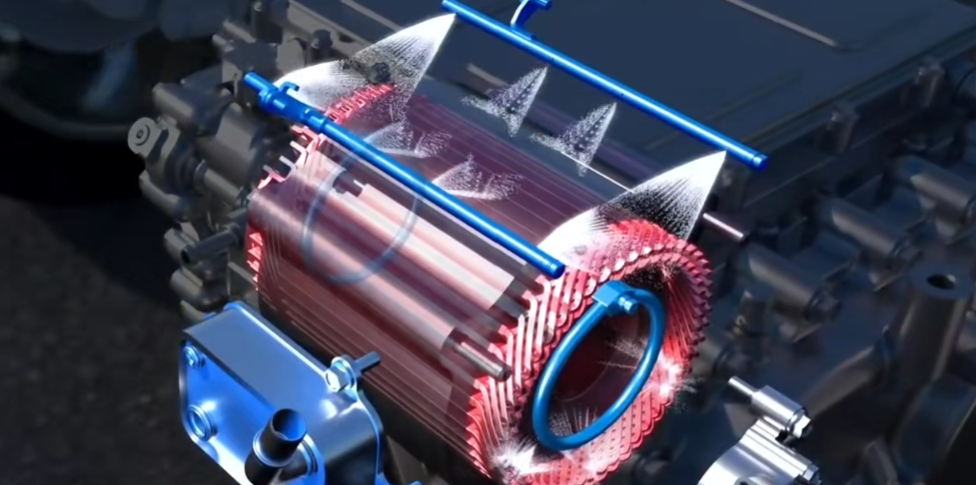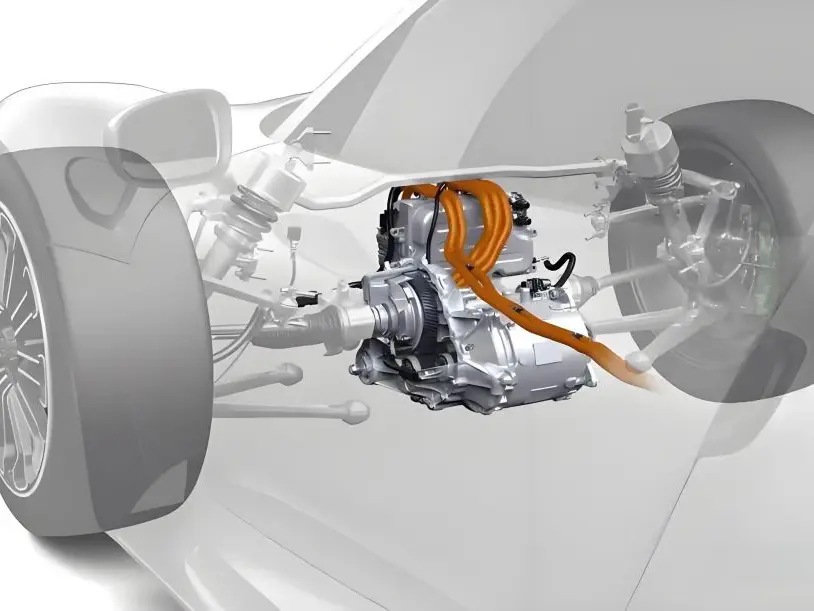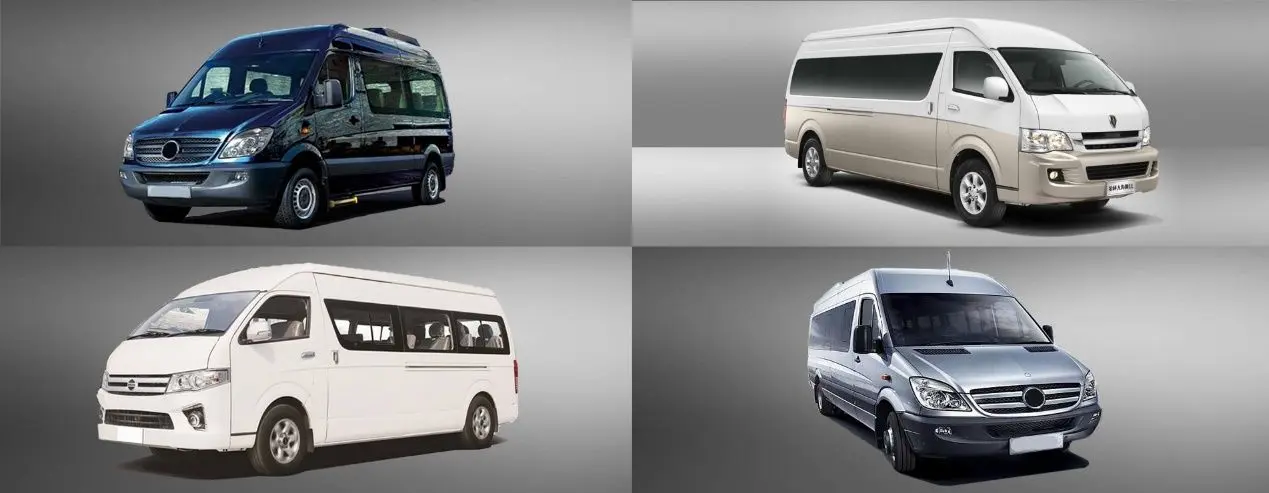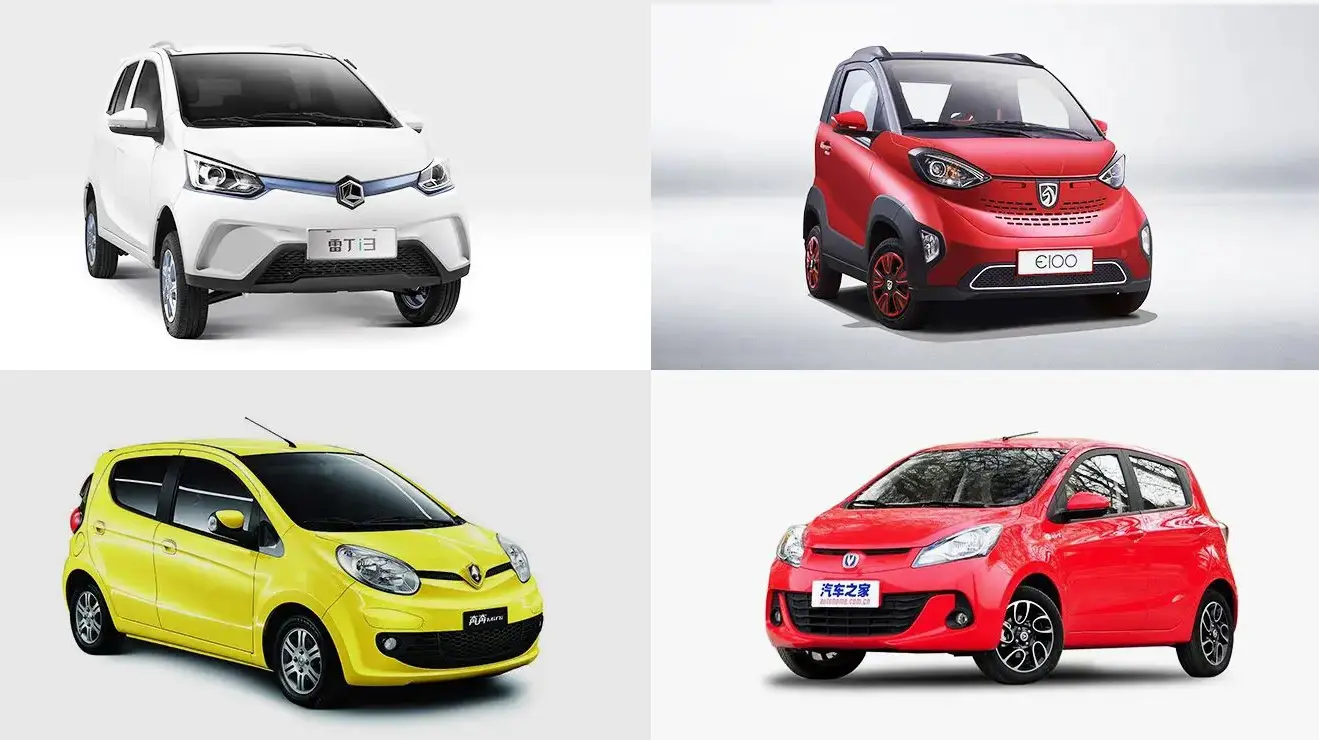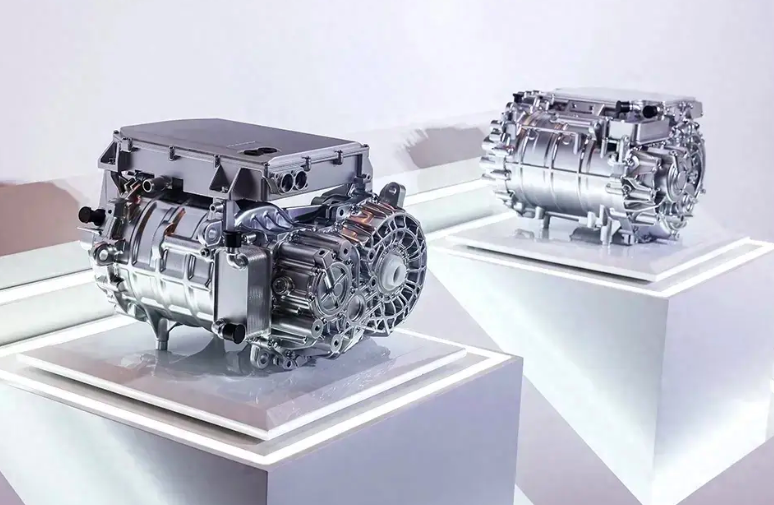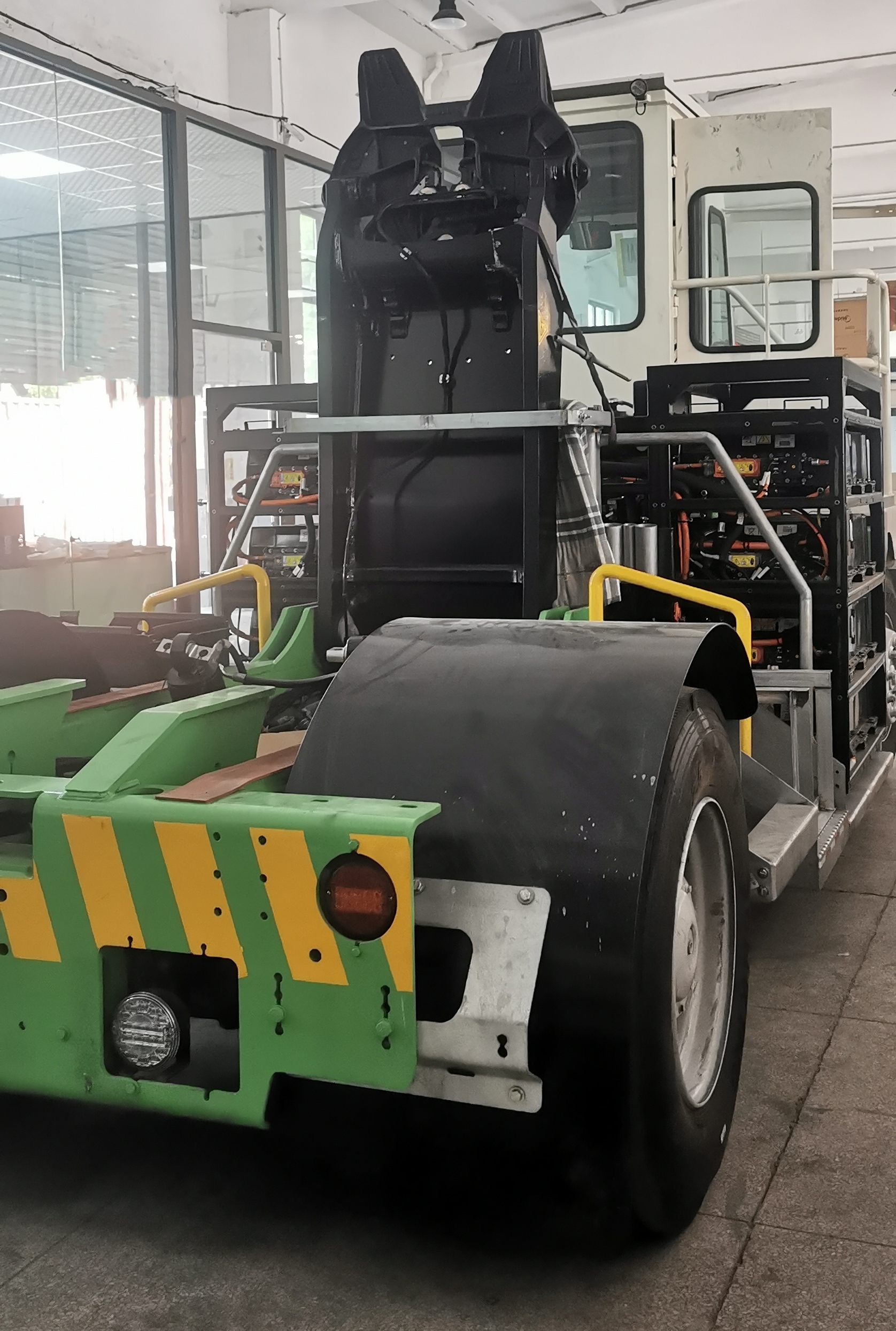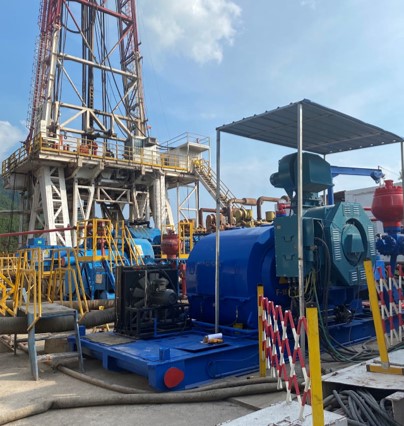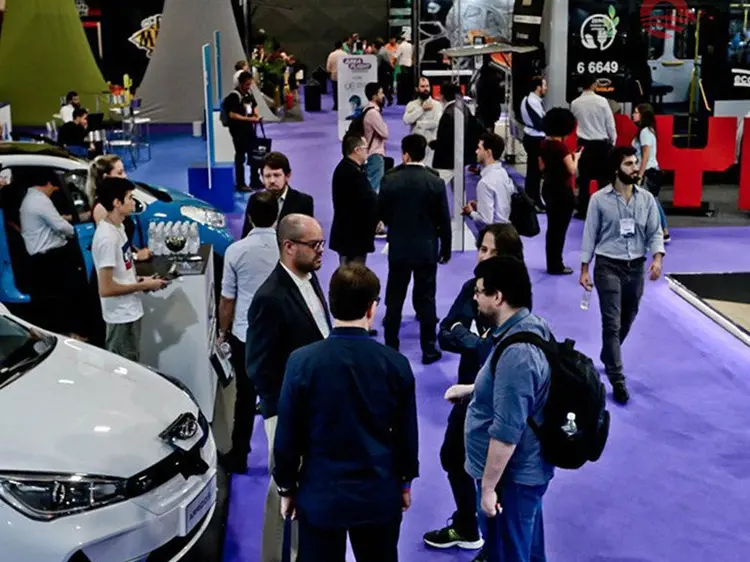From oil cooling to superconducting: a look at the technology route dispute of electric vehicle motors
1.Axial flux permanent magnet motor
Technical Principle :
Unlike traditional radial flux motors (where the magnetic field is perpendicular to the rotor shaft), axial flux motors feature a parallel magnetic field direction aligned with the shaft. These motors employ a disc-shaped structure where stator and rotor components are stacked axially. This design significantly reduces magnetic circuit length, decreases magnetic reluctance losses, and enables higher winding fill rates.
core advantage :
Power density: Up to 5.8 kW/kg (compared to traditional motors at approximately 3.2 kW/kg), with a 30% reduction in size, making it ideal for compact vehicle applications. Efficiency: Enhances efficiency by 3%-5% across a wide speed range, particularly suitable for high-torque scenarios like off-road vehicles or high-performance cars. Heat dissipation: Dual-sided cooling design reduces temperature rise by 15%, ensuring sustained high-power output.
application case :
Ferrari SF90 Stradale: Using the axial flux motor of YASA, the system peak power is up to 160kW, helping the vehicle accelerate from 0-100km/h in just 2.5 seconds.
Challenge:
Manufacturing cost: The precision lamination process requires high, and the mass production cost is 20%~30% higher than that of traditional motors. Supply chain maturity: only a few enterprises (such as YASA, Magnax) have large-scale production capacity in the world.
Future prospects:
It is expected that after 2025, with the improvement of stamping process and the decrease of material cost (such as the application of non-oriented silicon steel), axial flux motor will gradually penetrate into the market of passenger cars of 300,000 yuan.
2. Hub motor distributed drive
Technical Principle:
The motor is directly integrated into the wheel, and each wheel is driven independently through electronic control, eliminating the traditional mechanical parts such as transmission shaft and differential.
core advantage :
Space efficiency: The chassis space is released, and the battery layout flexibility is increased by 40%. Handling performance: The torque vector control accuracy reaches ±0.5°, supporting special driving functions such as "tank steering" and "crab mode". Energy recovery efficiency: Four independent wheels recover kinetic energy, improving overall range by 8% to 12%.
application case :
ProteanDrive hub motor: It has been used in Arrival electric commercial vehicle in the UK, with a single motor peak power of 75kW and a total system mass of only 36kg.
Challenge:
Spring mass: The increase of non-spring mass may affect the suspension response, and it needs to be matched with an active suspension system (such as CDC continuous damping control). Sealing and heat dissipation: IP67 protection and oil cooling design increase the cost and are difficult to produce in mass.
Future prospects:
Commercial vehicles and high-end passenger vehicles are the first to be applied, and the maturity of the controlled chassis technology will promote its popularity after 2025.
3. The third generation semiconductor (SiC/GaN) electric drive system
Technical Principle:
Silicon carbide (SiC) and gallium nitride (GaN) materials have high breakdown electric field and high thermal conductivity, which can be used to manufacture high frequency, high temperature and low loss power devices.
core advantage :
Efficiency Improvement: SiC MOSFET inverters reduce losses by 70% compared to silicon-based IGBTs, achieving motor system efficiency exceeding 97%. High Voltage Compatibility: Supports 800V platforms with 30% charging efficiency enhancement (e.g., Porsche Taycan's 800V architecture). Lightweight Design: Reduces heat dissipation components' size, lowering the total mass of the electric drive system by 15%.
application case :
Tesla Model 3: Using STMicroelectronics SiC module, the range is increased by 6%. BYD e-platform 3.0: All series are equipped with SiC electric control, and the comprehensive working condition efficiency reaches 89.7%.
Industrialization progress:
China has formed a complete SiC industry chain (such as San 'an Optoelectronics and Tianyue Advanced), and the cost of domestic 6-inch SiC wafers will drop to $400 / piece in 2024, driving the rapid increase of penetration rate.
4. Non-rare earth permanent magnet materials
Technical Principle:
Reduce dependence on rare earth elements by improving ferrite magnetism or developing new composite magnets (e.g., NdFeB + ferrite).
core advantage :
Cost advantage: The cost of ferrite magnets is only 1/5~1/3 of that of NdFeB. Resource security: China accounts for 37% of rare earth reserves, but faces risks in the international supply chain. Non-rare earth technologies can improve the resilience of the industrial chain. High temperature performance: Some ferrite materials have a demagnetization rate below 5% at 150℃, making them suitable for high-temperature environments.
application case :
GAC Jielang Hybrid Power System: Low-cost ferrite motor is adopted, and the magnetic energy product is increased to 45MGOe (close to the level of low-end NdFeB). Hitachi Metals: "no heavy rare earth" NdFeB magnet is developed, and the high temperature resistance is improved by 50%.
Challenge:
Magnetic performance bottleneck: The upper limit of ferrite magnetic energy is about 50MGOe, which is difficult to meet the demand of high-end vehicles. Process complexity: Composite magnetic materials need to control the magnetic circuit distribution precisely, and the yield rate of mass production needs to be improved.
5. Intelligent control algorithm —— Multi-objective real-time optimization control
Technical Principle:
Based on model predictive control (MPC) and digital twin technology, the motor parameters are dynamically adjusted to adapt to different working conditions.
core advantage :
Energy consumption optimization: During high-speed cruise, weak magnetic control is used to reduce iron loss and improve overall energy efficiency by 5%. Thermal management: The winding temperature is predicted in real time and the cooling strategy is adjusted to extend the duration of peak power by 20%.
case :
NIO ET7: Equipped with intelligent thermal management system, the continuous power of the motor is increased by 25%. Huawei Drive ONE: adopts AI optimization algorithm, and the coverage rate of electric drive efficiency MAP diagram reaches 92%.

6. AI-driven health management
Technical Principle:
Machine learning is used to analyze vibration and current signals to realize fault prediction and life optimization.
core advantage :
Fault warning: The LSTM network can predict bearing fault with an accuracy of over 92%, reducing unplanned downtime. Life extension: The dynamic adjustment of PWM strategy can prolong the life of IGBT by 30%.
Case :
Tesla OTA Upgrade: In 2023, the motor control logic was optimized through software updates, reducing recall risks by 70%. Siemens Sidrive IQ: The industrial motor health management system has been migrated to new energy vehicles.
7. Technical principles and classification of global efficient thermal management technology
Double oil cooling technology
Cost Increase: Requires high-precision oil pumps and sealing designs, resulting in an 8%-12% increase in system costs. Maintenance Complexity: Oil circuit blockage risks necessitate regular maintenance, driving up user maintenance expenses. Continuous Power Enhancement: Compared to traditional water cooling technology, continuous output power increases by 25% (for example, the motor peak power of NIO ET7 equipped with this technology reaches 480kW). Temperature Control: Stator winding temperature rise decreases by 15-20°℃, enabling more aggressive control strategies (such as continuous ejection mode). Working Principle: Cooling oil channels are arranged inside the motor's stator windings, while oil spraying is applied to the rotor shaft for simultaneous and efficient heat dissipation of both stator and rotor.
Phase change material heat dissipation technology
Cycle Life Limitation: The phase-change material experiences a 10%-15% decrease in thermal storage capacity after 5,000 phase transitions. Low-Temperature Start-up Challenge: Material solidification in cold environments may delay thermal response. Transient Thermal Shock Buffering: Absorbs 200kJ/kg of heat during rapid acceleration or high-load operations, reducing temperature rise rate by 40%. Lightweight Design: Reduces weight by 30% compared to traditional heat sinks (e.g., BMW iX motor achieves 5.2kg weight reduction). Working Principle: Phase-change materials like paraffin-based compounds and metal-organic frameworks (MOFs) are embedded in the motor housing or stator slots, absorbing heat through melting to buffer thermal dissipation.
application prospect
Short-term (before 2025): Double-sided oil cooling technology will become widespread in high-performance vehicles priced above 300,000 yuan (e.g., Tesla Plaid and NIO ET9), with an expected penetration rate of 35%. Long-term (2030): The combination of phase-change materials and liquid cooling solutions will dominate the market, particularly addressing localized overheating issues in 800V high-voltage platform models.
8. Technical principle of multi-in-one electric drive system
The motor, reducer, inverter, DC/DC converter, on-board charger (OBC), PDU (power distribution unit), VCU (vehicle controller), BMS (battery management system) and other modules are highly integrated to form a compact electric drive assembly.
core advantage
Size and Weight Optimization: BYD's 8-in-1 system achieves a 40% reduction in volume and 20% weight decrease, with a power density reaching 2.5 kW/kg. Efficiency Enhancement: The shortened harness length reduces energy transmission loss by 3%, achieving an overall efficiency exceeding 91% (as seen in the Huawei DriveONE system). Cost Control: Modular production lowers manufacturing costs by 15% while cutting assembly time by 50%.
Disadvantages
Maintenance difficulty: The highly integrated fault parts need to be disassembled for replacement, and the maintenance cost increases by 30%. Heat management challenge: In the compact layout, the local hot spot temperature may increase by 8-10℃, so the heat dissipation design needs to be strengthened.
application prospect
Passenger vehicle market: The penetration rate of multi-in-one systems in A-class and above models will exceed 60% by 2025, driven mainly by BYD, Tesla and Geely. Commercial vehicle adaptation: Due to fewer space restrictions in the heavy truck field, the promotion speed is slower (the penetration rate is expected to reach 30% by 2030).
9. Technical principle of superconducting motor technology
Using the zero-resistance characteristics of superconducting materials at low temperatures, high current density coils are manufactured to greatly improve power density and efficiency.
core advantage :
Power density leap: MgB The superconducting coil achieves a torque density of 200 Nm/kg at 20K (liquid nitrogen temperature range), surpassing traditional motors' 30 Nm/kg. Efficiency breakthrough: With zero resistance loss, the theoretical efficiency approaches 99.5%, while the practical engineering target is 98%. Lightweight design: Weighing merely one-third of conventional motors for equivalent power output, making it ideal for specialized applications like flying cars.
Disadvantage :
The refrigeration system is complex: the liquid nitrogen circulation device increases the volume (accounting for 40% of the motor system) and energy consumption (the cooling power accounts for 5% of the output power). The cost is high: the cost of superconducting materials + refrigeration system is more than 10 times that of traditional motors, and it is difficult to commercialize.
Short-term test: Toyota plans to launch a prototype of fuel cell heavy truck equipped with superconducting motor in 2025, and the range will be increased to 1000km. Long-term potential: If high temperature superconducting materials (such as yttrium barium copper oxide) break through the liquid nitrogen temperature zone (77K), it may enter the high-end passenger car market after 2035.

10. Technical principle of magnetic gear composite motor
The variable speed transmission without mechanical contact is realized by the principle of magnetic field modulation, and the motor and magnetic gear are integrated.
core advantage :
Improved transmission efficiency: Eliminates gear friction loss, achieving 98.5% mechanical efficiency (compared to approximately 95% in traditional reducers). Maintenance-free design: Contactless transmission eliminates lubricant changes, reducing lifecycle maintenance costs by 70%. NVH optimization: Eliminates gear meshing noise and reduces interior sound pressure level by 5dB(A).
inferior strength or position :
Torque density limit: The torque density of the current laboratory prototype is only 50Nm/kg, which needs to be increased to 80Nm/kg to be competitive. Control complexity: A new magnetic field orientation control algorithm needs to be developed, and the software development cost increases by 200%.
application prospect :
Breakthrough in specific scenarios: It may be applied to luxury electric vehicles (such as Rolls-Royce Spectre iteration models) before 2030, focusing on silence and smoothness. Technology replacement path: If the cost of permanent magnet materials decreases, magnetic gear technology may gradually replace two-speed transmission.
11. Technical principle of recyclable motor design
Through modular structure, easy disassembly and connection process and bio-based materials, the efficient recovery and reuse of motor components can be achieved.
core advantage :
Enhanced Rare Earth Recovery: The segmented magnet design boosts neodymium iron boron (NdFeB) recovery from 60% to 95% (based on BMW iX motor test data). Reduced Carbon Footprint: Biobased insulation materials like polylactic acid achieve a 40% lifecycle emission reduction. Regulatory Compliance: Meets the EU's New Battery Directive requirement for ≥90% motor recycling rates, effectively avoiding trade barriers.
inferior strength or position :
Performance compromise: The detachable structure reduces the stator stiffness by 10% and increases the risk of high-speed vibration. Cost increase: The modular design increases the manufacturing cost by 8%~12%, which needs to be diluted by scale effect.
application prospect :
Policy-driven market: Regions with strict regulations such as the EU and China will take the lead in popularization, with the proportion of recycled motors expected to exceed 25% by 2027. Material innovation breakthrough: Graphene-reinforced bio-based materials are expected to enhance the temperature resistance rating to 200℃, expanding their application to high-performance vehicles.
Summary: Technology commercialization path and challenges
Technical Advantages & Limitations Commercialization Timeline: Full-domain high-efficiency thermal management with enhanced power output stability, extending motor lifespan. System complexity increases maintenance costs. 2025: Mature (for premium vehicles) Multi-in-one electric drive systems achieve high integration for cost reduction and efficiency improvement. Maintenance challenges persist despite scaled thermal management implementation (2023 penetration rate 40%). Superconducting motors demonstrate extreme efficiency and power density. Refrigeration systems remain cumbersome and prohibitively expensive. 2030+ (Commercial vehicles lead the charge): Magnetic gear composite motors deliver silent maintenance-free operation with efficiency breakthroughs, though torque density remains insufficient and control systems remain complex. 2035 (luxury car market): Recyclable motor designs meet environmental compliance standards with sustainable resource utilization. Performance compromises occur due to high initial costs. 2026 (regulatory-mandated regions)









